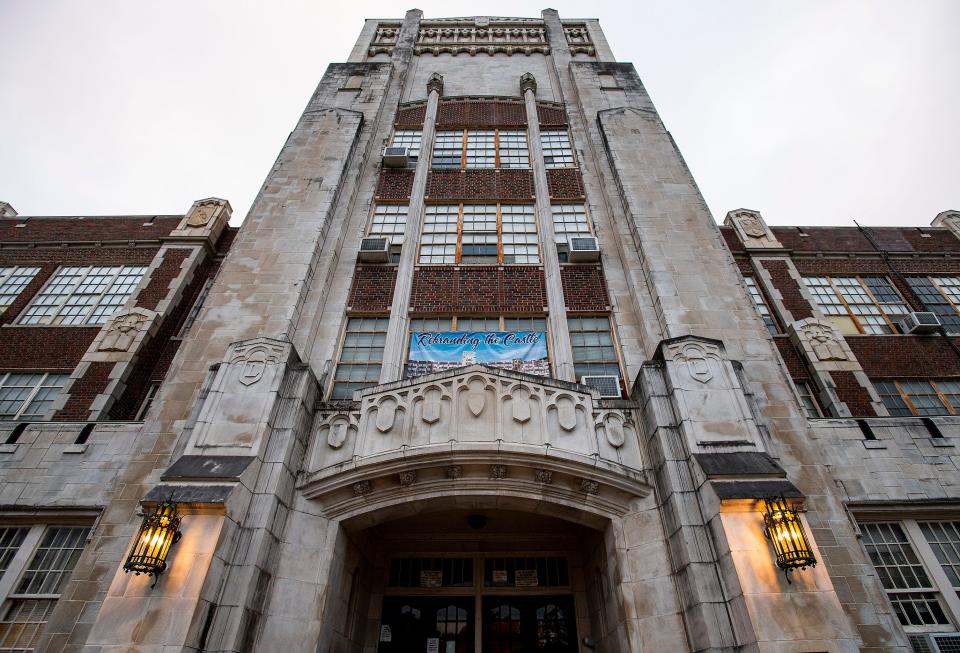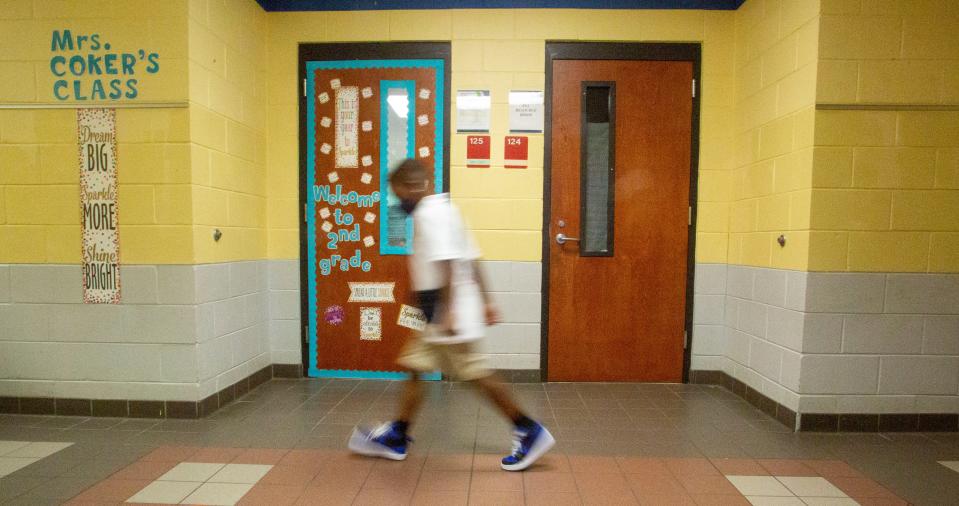'We need our kids in school': How chronic absenteeism impacts Montgomery's kids
In an Alabama school district, one principal noticed that a little boy kept leaving school early. He would show up on time, stay in class for a few hours and then for one given reason or another, he would check out and leave in the middle of the day.
This didn’t just happen once or twice. It happened often enough to impact the boy’s learning.
“They realized it was because his shoes were too small, and his feet were hurting walking around to class all day,” VOICES for Alabama’s Children policy and data analyst Apreill Hartsfield said.
More: Carver High School junior ZyAsia Belser creates innovative program for juvenile reentry
She’s heard many stories of kids missing school for preventable reasons, and each absence adds up. According to the Alabama State Department of Education, if a child misses just two days of school a month, that results in missing 10% of the year’s educational instruction.
When a child misses 10% or more of the school year, which would be 18 days or more, he or she is labeled as chronically absent. This means the child is more likely to fall behind, disengage from school and eventually drop out.
Chronic absenteeism is a predictive measure that every public school district in Alabama measures and reports to the state education department. Those reported numbers show that the chronic absenteeism rate in Montgomery Public Schools jumped from 11.95% before the COVID-19 pandemic to 25.82% by the spring of 2022.
More: JAG freshman Jaden Williams supports the community that bolstered him through adversity
Over a quarter of MPS students are missing at least 18 days of school per year.
“Absenteeism is a problem that we have to solve,” MPS Superintendent Melvin Brown said in his State of the Schools address. “We need our kids in school every day, all day.”
In the speech Brown gave two months ago, he said addressing absenteeism was one of his top priorities, which would in turn have a positive impact on academic achievement.
Inside Montgomery’s data
Recent years have shown that even MPS’s most high-achieving schools aren’t immune to the impact of chronic absenteeism. Every single MPS high school saw an increase in its chronic absenteeism rate from 2018 to 2021.
LAMP’s rate went from 1.75% to 8.4%; BTW Magnet High School jumped from just .98% to 11.2%; and BrewTech went from 1.48% to 10.02%.
Still, the traditional high schools faced absenteeism in greater numbers. In two of them, nearly half of the student body is chronically absent, and in one, it’s more than half.
Carver High School jumped from 18.18% to 34.58%. Lanier High School — which is in the process of merging with Carver — went up from 25.65% to 50.48%. Formerly known as Jefferson Davis High School, JAG hopped from 23.93% to 41.71%, and Percy Julian High school, which used to be Lee, went up from 25.81% to 43.61%.

How it happened
The rise in chronic absenteeism since the last pre-COVID school year is not in any way unique to Montgomery. It’s a nationwide issue that schools everywhere are working to address.
In fact, a 2023 study from the Associated Press and Stanford University found that Alabama is tied with New Jersey for the state with the lowest amount of chronic absenteeism growth in the country — meaning that numbers still went up, but not as much as they did everywhere else.
“It’s not where we want to be, but we were number one in the nation in students getting back in school and not being absent,” State Superintendent Eric Mackey said in the September board of education meeting. “We’d like to see that our chronic absenteeism rates drop dramatically over the next year or two.”

As a state, Alabama’s chronic absenteeism rate is 18%, meaning Montgomery’s rate of 25.82% is higher than the average.
Some of the factors influencing absenteeism rates include: mental health struggles, bullying, already poor academic performance, housing instability, family problems and lack of reliable transportation.
Previously, and still in many instances today, districts use intervention methods to address the needs of students who are chronically absent, and if that doesn’t work the threat of fines and potential jail time for truancy loom over guardians’ heads.
While absenteeism measures both excused and unexcused absences, truancy measures only unexcused.
“The punitive measures aren’t working,” Hartsfield said. “There is a time and place for penalizing kids, but it should be about getting to the root cause.”
Where the solutions come in
Numerous initiatives are in action throughout the state that are working to educate parents and students about the greater negative implications of being chronically absent. Other groups make efforts to address the individual causes of each student’s absences — like the little boy whose shoes didn’t fit.
The program that helped him is called the Helping Families Initiative, and it began 20 years ago with a youth intervention initiative in the District Attorney's Office of the 13th Judicial Circuit of Alabama.

How it works is that HFI case workers perform in-depth family assessments to help guardians understand why their children are acting out, not performing well in school or are unable to meet required days of attendance. From there, they create an individualized intervention plan, provide supporting resources and continue to follow up with the family months later.
Back in 2014, the initiative helped public schools in Montgomery County dramatically reduce unexcused absences and suspensions.
Other prevention methods in place across Alabama according to the state attendance manual are: flu vaccination programs to reduce absences during flu season, encouraged hygiene and hand-washing in schools and sending letters home to guardians to ensure they understand the importance of their kid being in school every day.
Ultimately, there is no single solution to chronic absenteeism and its impact on student learning. Still, MPS and the state board of education have made public commitments to making improvements.
Hadley Hitson covers children's health, education and welfare for the Montgomery Advertiser. She can be reached at hhitson@gannett.com. To support her work, subscribe to the Advertiser.
This article originally appeared on Montgomery Advertiser: Montgomery Public Schools sees rise in chronic absenteeism post-COVID

